10 May 2016
L’image volée is a joint exhibition curated by the artist Thomas Demand and staged by Manfred Pernice for the Fondazione Prada: a double exhibition, or perhaps it would be better to say that it has been split in two, because that is the number of modes adopted to look at the same phenomenon. The first, located on the ground floor of the Galleria Nord, covers the infinite variations on the concept of theft in art, from appropriation to falsification, raising questions about the cultural and economic implications of such an act. Demand starts with a literal reference to the physical evidence of a crime: from the mutilated work of Adolph von Menzel (Friedrich der Große auf Reisen, 1854), found in Hitler’s rooms in 1945 and never put on show again, to the video of the robbery at the Neue Nationalgalerie in Berlin orchestrated by Ulay in 1976 and Maurizio Cattelan’s tragicomic report of the theft of an immaterial work of sculpture (1991). A little further on we come to a shift in the meaning of theft, its sense changing from that of a crime to that of a method adopted by the artist: and so we have Pierre Bismuth taking the iconic posters of Daniel Buren, turning them into origami and putting them on show, or Henrik Olesen paying homage to the English sculptor Anthony Caro with a piece of plagiarism in which the work is identical but made out of painted wood and pipes instead of iron and aluminum. The hunt for the thief continues in the virtual world: Oliver Laric offers his 3D reproductions of classical statuary, which can be downloaded free of charge from the website Three D Scans, in a challenge to the limitations placed by copyright on the free circulation of forms and ideas conceived two thousand years ago. Sara Cwynar, on the other hand, has created wallpaper inspired by the masterpieces of modernism, in which she inserts, among other things, Francis Bacon’s images of mangled bodies. Alongside, the curator has placed five small slashed canvases by Bacon, found in his studio: he wasn’t happy with them and, wanting to avoid their being put onto the market against his will after his death, decided to deface them. The second mode inhabits the basement of the Galleria Nord and the Sala Cinema and interprets theft as the last means left to artists for a critical exploration of the society in which they vive. Here it is not ideas, styles or valuable paintings that are stolen, but identities, faces and secrets. Under indictment is the infrastructure of global surveillance (in the photographs of Trevor Paglen and Demand himself) or the mysteries of certain state ceremonies (in the videos of Andree Korpys and Markus Löffler). And again: the failure of the media to talk about anything other than itself (in Viktoria Binschtok’s triptych of photographs), a selection of equipment for spying, relics of a pre-Snowden era, and much more. The sublimation of theft in the art world finally gives way to the most characteristic and elusive phenomenon of the 21st century: the stealing of our privacy.
L’image volée
Curated by Thomas Demand
Fondazione Prada, Milan
March 18-August 28
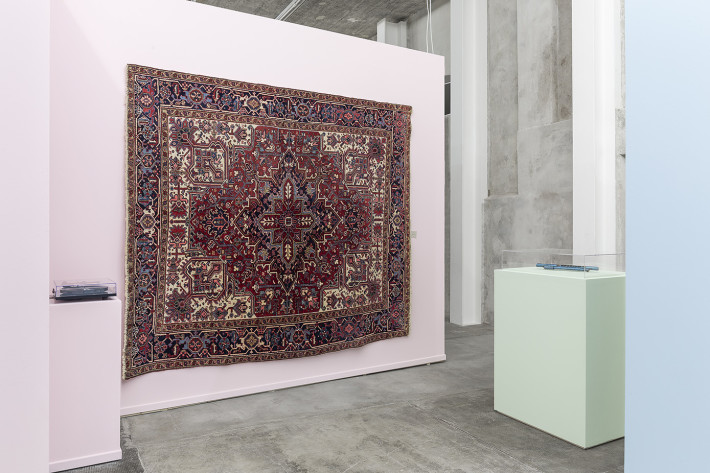
From left to right: Richard Artschwager, Stolen Rug, 1969; Andreas Slominski, Stolen Pump, 1998; Maurizio Cattelan Untitled, 1991.

Adolph von Menzel, Friedrich der Grosse auf Reisen. Fragment, 1853–1854.
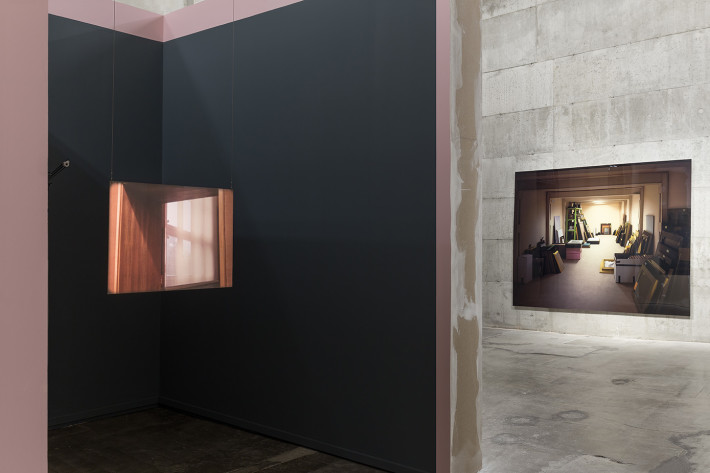
Left: Tacita Dean, Darmstädter Werkblock, 2007. Right: Thomas Demand, Vault, 2012.
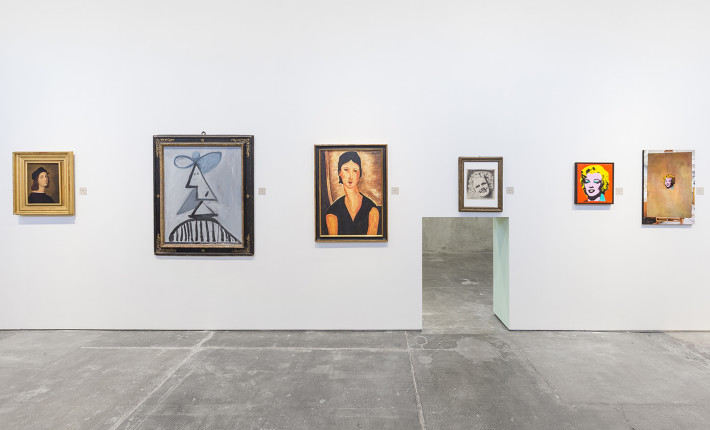
From left to right: Jean-Auguste-Dominique Ingres, Autoportrait de Raphael, 1820 – 1824; Cy Twombly, Copy of a Picasso, 1988; Pierre Huyghe, De Hory Modigliani, 2007; Maurizio Mochetti, Mochetti di Mochetti (Jean Harlow),1976; Sturtevant, Warhol Marilyn (study for Warhol diptych), 1973; Louise Lawler, Marilyn, 1999.
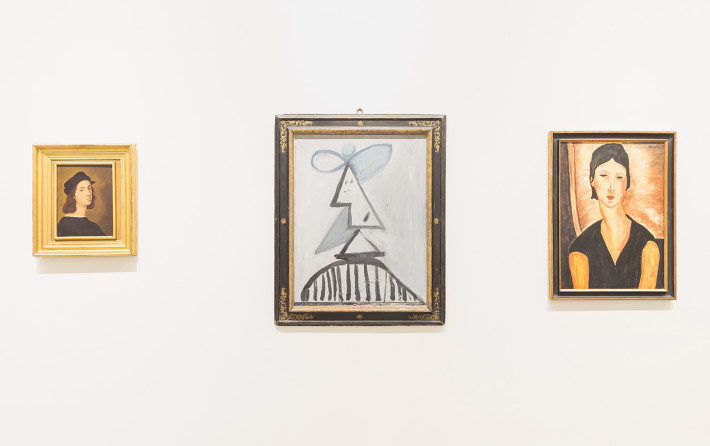
From left to right: Jean-Auguste-Dominique Ingres, Autoportrait de Raphael, 1820 – 1824; Cy Twombly, Copy of a Picasso, 1988; Pierre Huyghe, De Hory Modigliani, 2007.
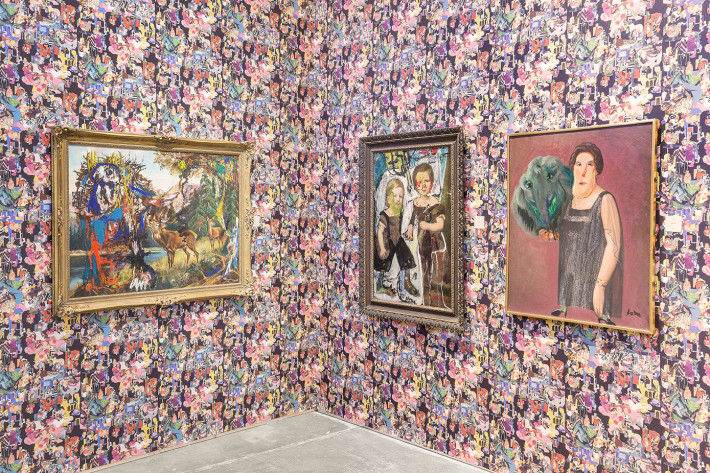
From left to right: Asger Jorn, Rutting Stag in the Royal Forest, 1960; Asger Jorn, The Sweet Life II, 1962; Asger Jorn, Brotherhood Above All, 1962. Background wallpaper: Sara Cwynar, 72 Pictures of Modern Paintings (wallpaper), 2016.
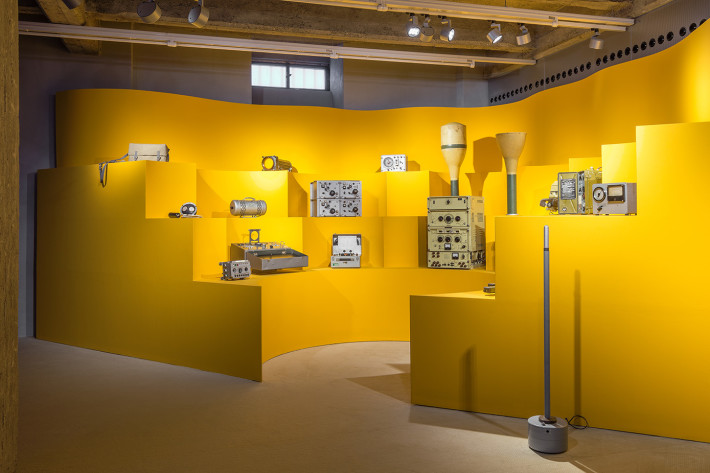
A Selection of Spyware (Soviet and East German spy equipment) from the Wende Museum of the Cold War (Culver City, CA), curated by anonymous. Hans Hollein, “Austriennale (Amphitheatre)”, 1968 (2016) recreation.
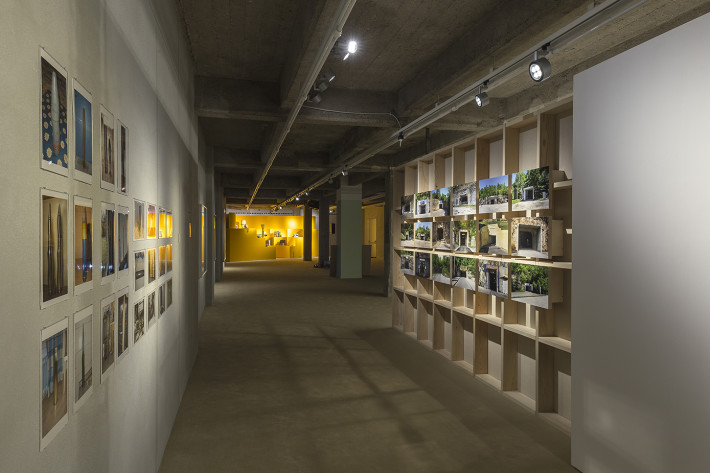
Left: Peter Piller, Deko und Munition 1; Deko und Munition 2; Deko und Munition 3; Deko und Munition 7, 2003. Right: The Center for Land Use Interpretation, Images of Portals from the Center for Land Use Interpretation Photo Archive, 2015.
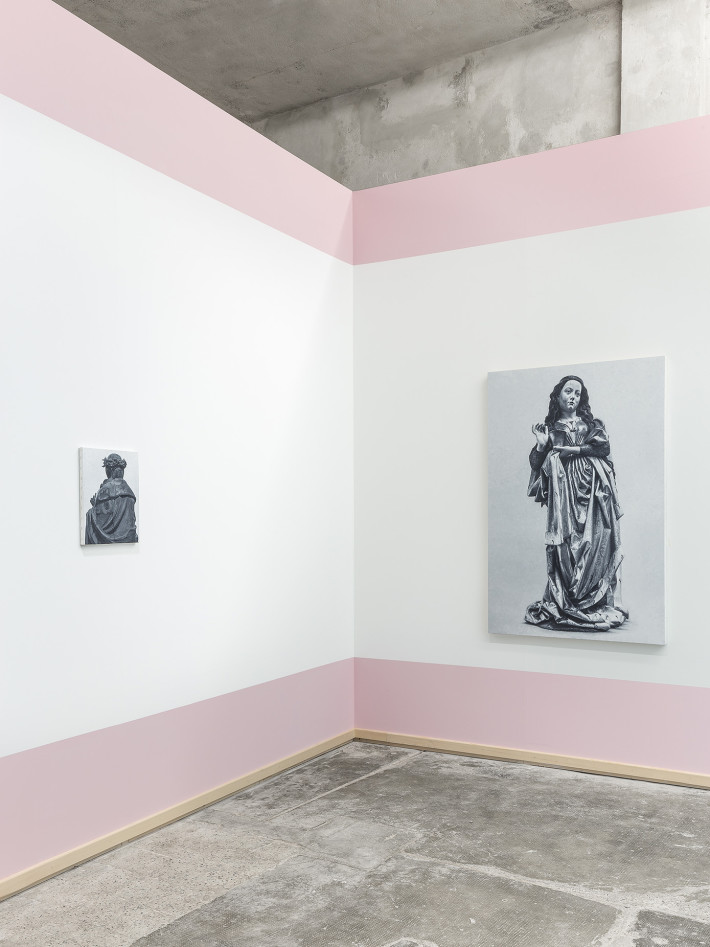
From left to right: Rudolf Stingel, Untitled, 2010; Rudolf Stingel, Untitled (St. Barbara), 2009.
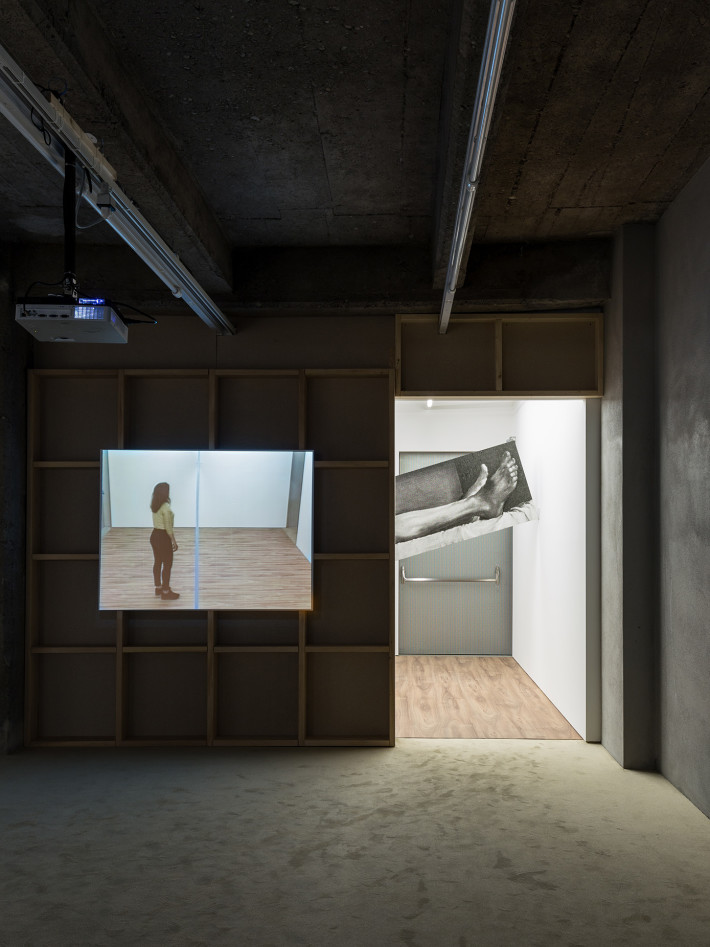
John Baldessari, Blue Line (Holbein), 1988.
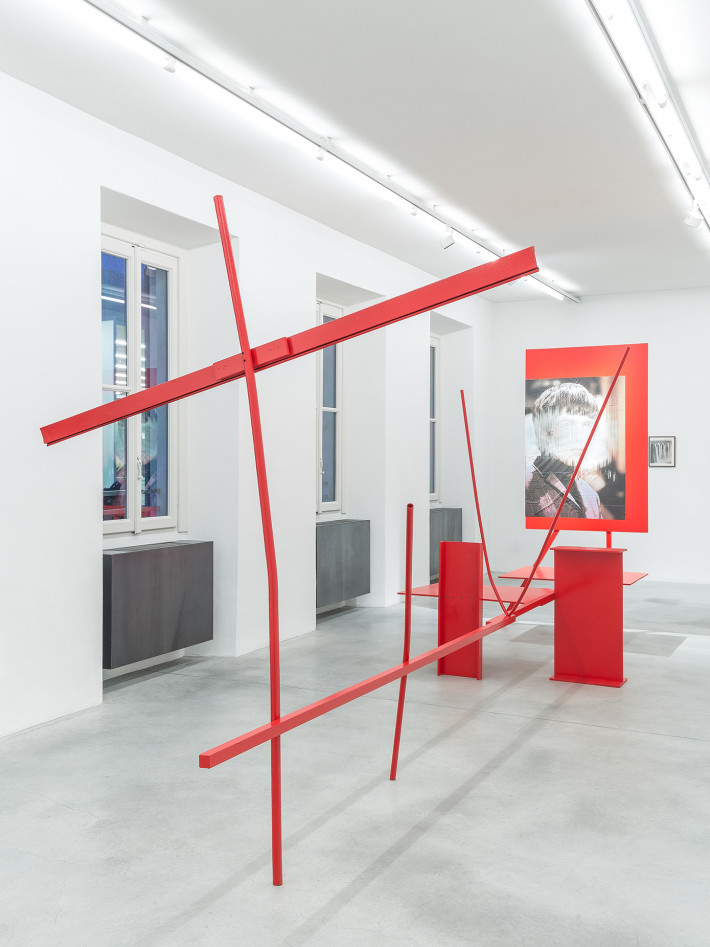
Henrik Olesen, 2 (Holbein), 2016.